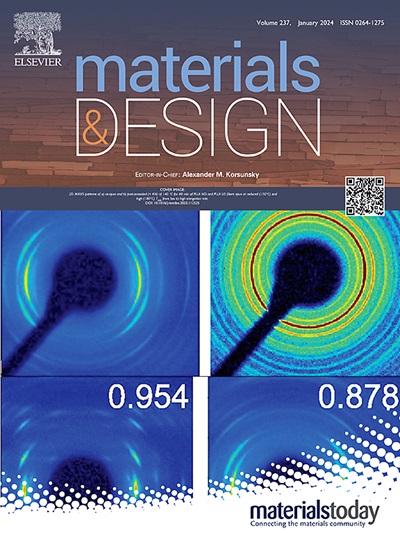Discrete slip plane analysis of ferrite microtensile tests: Influence of dislocation source distribution and non-Schmid effects on slip system activity
IF 7.6
2区 材料科学
Q1 MATERIALS SCIENCE, MULTIDISCIPLINARY
引用次数: 0
Abstract
The slip system activity in microtensile tests of ferrite single crystals is compared with predictions made by the discrete slip plane model proposed by Wijnen et al. (2021) [24]. This is an extension of conventional crystal plasticity in which the stochastics and physics of dislocation sources are taken into account in a discrete slip band. It results in discrete slip traces and non-deterministic mechanical behavior, similar to what is observed in experiments. A detailed analysis of which slip systems are presumed to be active in experiments is performed. Non-Schmid effects are incorporated by extending a non-Schmid framework commonly used to model {110} slip to {112} planes. The slip activity in the simulations is compared to that in the tests. Conventional crystal plasticity fails to predict the diversity in active slip systems that is observed experimentally. The slip activity obtained with the discrete slip plane model is in much better agreement with the experiments. Including non-Schmid effects only entails minor differences. This suggests that stochastic effects dominate the behavior of ferrite crystals with dimensions in the order of a few micrometers and that non-Schmid effects may not play a large role.

求助全文
约1分钟内获得全文
求助全文
来源期刊

Materials & Design
Engineering-Mechanical Engineering
CiteScore
14.30
自引率
7.10%
发文量
1028
审稿时长
85 days
期刊介绍:
Materials and Design is a multi-disciplinary journal that publishes original research reports, review articles, and express communications. The journal focuses on studying the structure and properties of inorganic and organic materials, advancements in synthesis, processing, characterization, and testing, the design of materials and engineering systems, and their applications in technology. It aims to bring together various aspects of materials science, engineering, physics, and chemistry.
The journal explores themes ranging from materials to design and aims to reveal the connections between natural and artificial materials, as well as experiment and modeling. Manuscripts submitted to Materials and Design should contain elements of discovery and surprise, as they often contribute new insights into the architecture and function of matter.
 求助内容:
求助内容: 应助结果提醒方式:
应助结果提醒方式:


